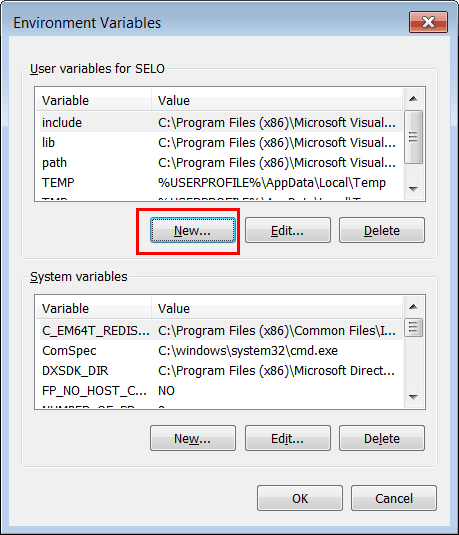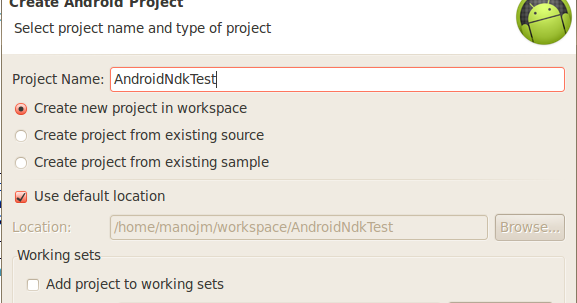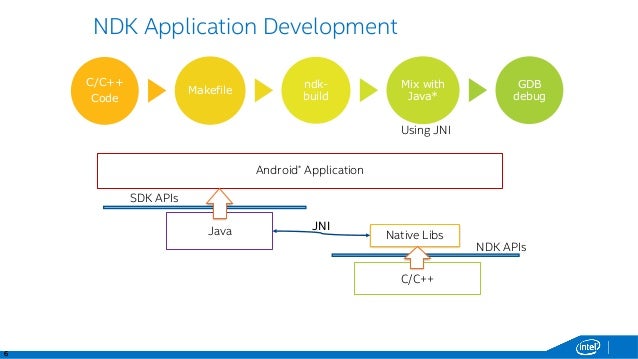

- Android ndk development how to#
- Android ndk development install#
- Android ndk development android#
- Android ndk development code#
Android Software Development Kit (SDK): C:\Users\Public\Documents\RAD Studio\12.0\PlatformSDKs\adt-bundle-windows-x86-20130522\sdk. Java Development Kit (JDK): C:\Program Files\Java\jdk1.7.0_25. Here are the default installed locations of the Android development tools as installed by the RAD Studio installer: To build mobile apps for the Android target platform, you also need to add an Android SDK to the RAD Studio SDK Manager. Having the Android development tools installed on your development system is required for developing Android apps using RAD Studio. Note: The JDK is installed if you do not have the recommended version of Java (1.6 or 1.7), regardless of whether the Android development tools are installed for you during product installation. Android ndk development install#
Install the Android development tools yourself, following the steps in this topic.īe aware that you need to use the recommended versions of the Android development tools alternate versions might introduce changes that cannot be supported by RAD Studio. Use a previously installed Android SDK and NDK. If you opt out in the installer, you can either: The installer gives you the option to not install the Android SDK and NDK. The Android Tools menu item opens the Android SDK Manager, from which you can start the Android Virtual Device Manager. The Android development tools are conveniently accessible using Start > All Programs > Embarcadero RAD Studio > Android Tools, as shown here:. The installer for RAD Studio installs the current recommended and tested versions of the Android development tools during the RAD Studio product installation. The book focuses on putting to your knowledge of C++ use while you develop Android applications of your own.Important: You do not need to install the Android tools yourself. Style and approach This book adopts a step-by-step approach and each chapter is based on the material from the previous ones. By the end of this book, you will be able to create an engaging, complete gaming application. Each chapter aims to take you one step closer to building your application. Android ndk development how to#
Through the course of this book, you will learn how to write portable multi-threaded native code, use HTTP networking in C++, play audio files, use OpenGL ES 3, and render high-quality text. The book takes you through many clear, step-by-step example applications to help you further explore the features of Android NDK and some popular C++ libraries and boost your productivity by debugging the development process. This is a hands-on guide to extending your game development skills with Android NDK. NDK is also the key for portability, which in turn allows a reasonably comfortable development and debugging process using familiar tools such as GCC and Clang toolchains. Render text with FreeType In Detail Android NDK is used for multimedia applications that require direct access to system resources.Debug mobile applications on your desktop machine.Implement portable rendering framework using OpenGL ES 3.
 Create portable audio framework using OpenAL.
Create portable audio framework using OpenAL. Android ndk development code#
Write portable, multithreaded native networking code.Explore popular C++ libraries and use them on Android.

It would be an added advantage if you know how to develop applications without any IDE. Knowledge of C or C++ is assumed, including pointer manipulation, multi-threading, object-oriented programming concepts, and the basics of C++11. Write multi-threaded code with graphics, sound, networking, and resource storage Who This Book Is For If you want to leverage your C++ skills in mobile development and increase the performance of your Android applications, then this is the book for you.Familiarise yourself with different popular C++ libraries on Android and use them in your games.Develop portable games using Android NDK and debug them on your desktop.Master the skills you need to develop portable, highly-functional Android applications using NDK About This Book







 0 kommentar(er)
0 kommentar(er)
